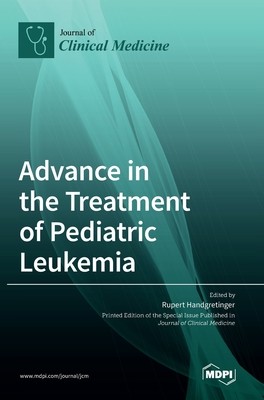
- We will send in 10–14 business days.
- Publisher: MDPI AG
- ISBN-10: 3036541675
- ISBN-13: 9783036541679
- Format: 17 x 24.4 x 2.4 cm, hardcover
- Language: English
- SAVE -10% with code: EXTRA
Advance in the Treatment of Pediatric Leukemia (e-book) (used book) | bookbook.eu
Reviews
Description
The book gives an overview on the progress that has been made in the treatment of acute lymphoblastic leukemia (ALL), of acute and chronic myeloid leukemia (AML, CML) and of juvenile myelomonocytic leukemia (JMML). Leukemia is the most common malignant disease in children, and 80% of patients are diagnosed with ALL and 15-20% with AML, whereas CML and JMML are rather rare. Although ALL was considered an incurable disease until the early 1960s, with the availability of cytotoxic drugs and the start of clinical multicenter studies, ALL has become an almost curable disease with a survival rate exceeding 90 % in high-income countries. These impressive results have mainly been achieved by a deeper understanding of the genomic landscape of the disease and the introduction of risk stratifications based on genetic features and response to chemotherapy as determined by the presence or absence of minimal residual disease (MRD). Immunotherapies including bispecific T-cell Engagers (BiTEs), Chimeric Antigen Receptor (CAR) T cells, monoclonal antibodies and improvements in the outcome of allogeneic stem cell transplantation (HSCT) have shown impressive results in chemorefractory or relapsed patients, and it is anticipated that the cure rate can be further increased. For countries with less resources, therapies have to be adapted to increase survival as well. This book also updates on the progress made in the treatment of AML. As in ALL, risk classification based on genetic factors and response to chemotherapy is most important for therapy guidance. The book also provides updates and guidance for the treatment of CML and JMML.
EXTRA 10 % discount with code: EXTRA
The promotion ends in 9d.04:13:25
The discount code is valid when purchasing from 10 €. Discounts do not stack.
- Publisher: MDPI AG
- ISBN-10: 3036541675
- ISBN-13: 9783036541679
- Format: 17 x 24.4 x 2.4 cm, hardcover
- Language: English English
The book gives an overview on the progress that has been made in the treatment of acute lymphoblastic leukemia (ALL), of acute and chronic myeloid leukemia (AML, CML) and of juvenile myelomonocytic leukemia (JMML). Leukemia is the most common malignant disease in children, and 80% of patients are diagnosed with ALL and 15-20% with AML, whereas CML and JMML are rather rare. Although ALL was considered an incurable disease until the early 1960s, with the availability of cytotoxic drugs and the start of clinical multicenter studies, ALL has become an almost curable disease with a survival rate exceeding 90 % in high-income countries. These impressive results have mainly been achieved by a deeper understanding of the genomic landscape of the disease and the introduction of risk stratifications based on genetic features and response to chemotherapy as determined by the presence or absence of minimal residual disease (MRD). Immunotherapies including bispecific T-cell Engagers (BiTEs), Chimeric Antigen Receptor (CAR) T cells, monoclonal antibodies and improvements in the outcome of allogeneic stem cell transplantation (HSCT) have shown impressive results in chemorefractory or relapsed patients, and it is anticipated that the cure rate can be further increased. For countries with less resources, therapies have to be adapted to increase survival as well. This book also updates on the progress made in the treatment of AML. As in ALL, risk classification based on genetic factors and response to chemotherapy is most important for therapy guidance. The book also provides updates and guidance for the treatment of CML and JMML.


Reviews